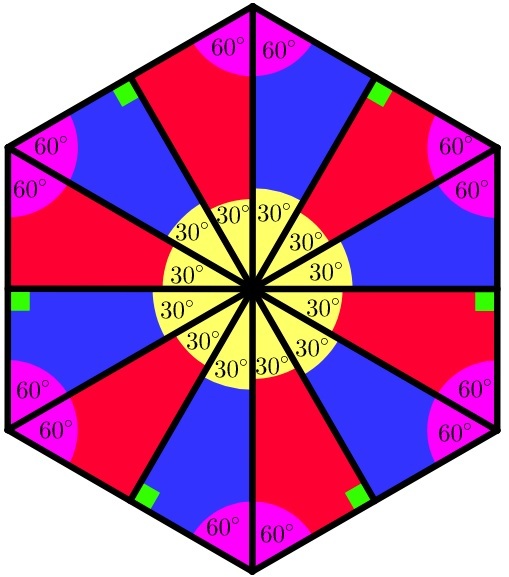Polygon
A convex polygon has number of sides. We cut the polygon to triangles, such that each triangle's angles are , and, . Find the maximum value of .
For example, there exists such a polygon for
.

This section requires Javascript.
You are seeing this because something didn't load right. We suggest you, (a) try
refreshing the page, (b) enabling javascript if it is disabled on your browser and,
finally, (c)
loading the
non-javascript version of this page
. We're sorry about the hassle.
Since 3 0 ∣ 3 0 , 6 0 , 9 0 , each of the polygon's angles is multiple of 3 0 , so the maximum possible value of each angle is 1 5 0 ° . If a polygon doesn't have an angle greater than 1 5 0 ° , then the avarege of its angles isn't greater than 1 5 0 ° . So if the polygon has k number of sides, the k ( k − 2 ) ∗ 1 8 0 ° ≤ 1 5 0 ° By rearranging we get: 1 8 0 k − 3 6 0 ≤ 1 5 0 k ⟺ 3 0 k ≤ 3 6 0 ⟺ k ≤ 1 2 For k = 1 2 , there exist a polygon: Therefore the answer is
1
2
.
Therefore the answer is
1
2
.